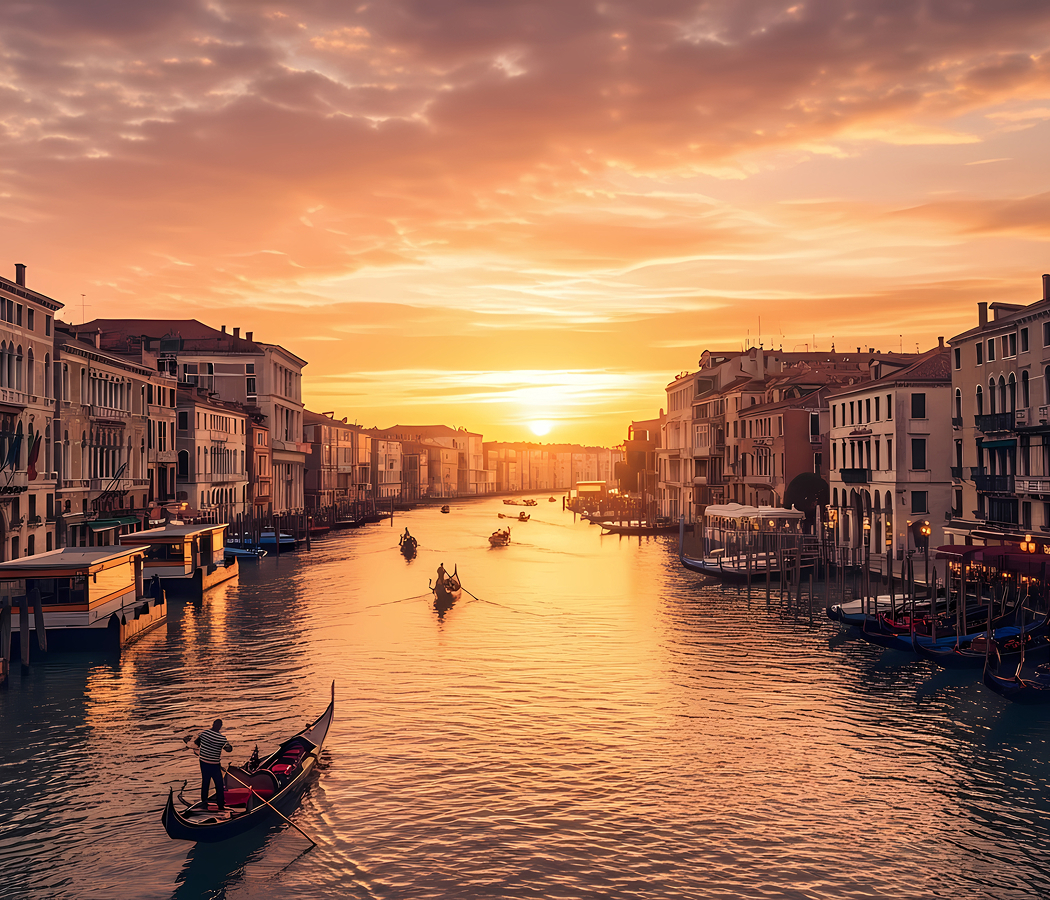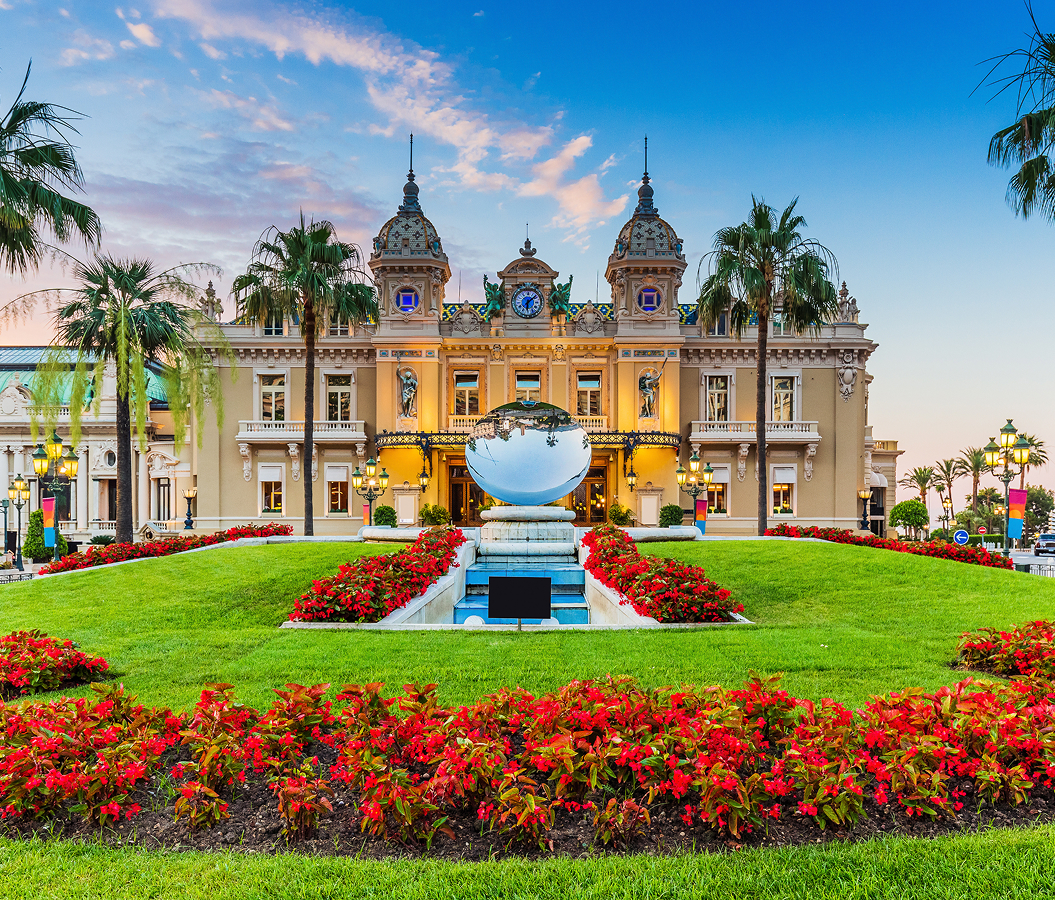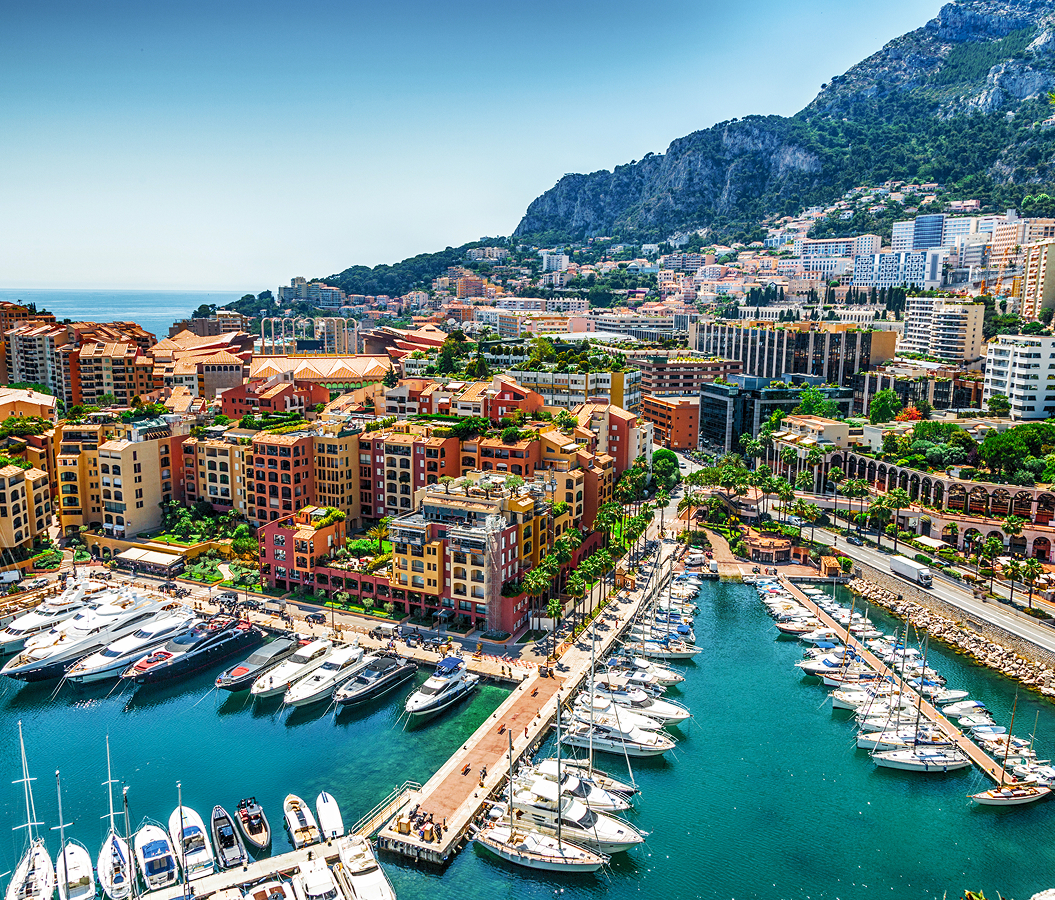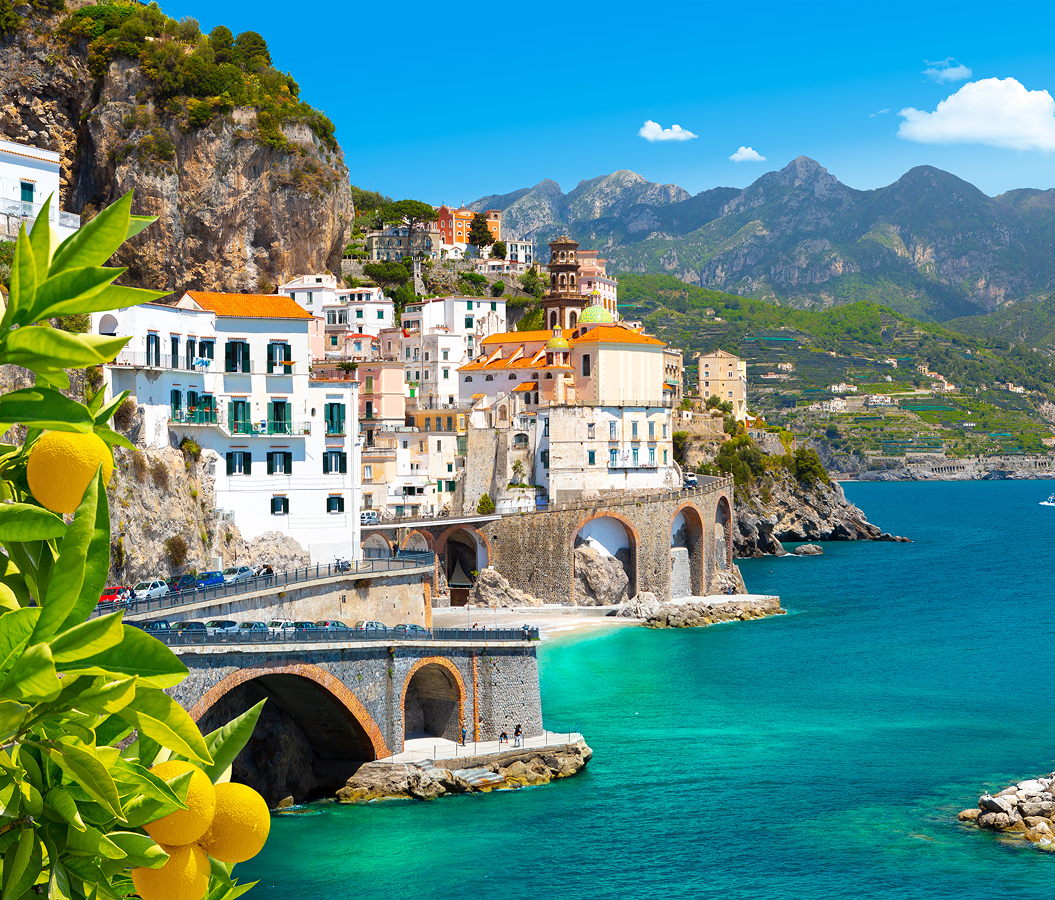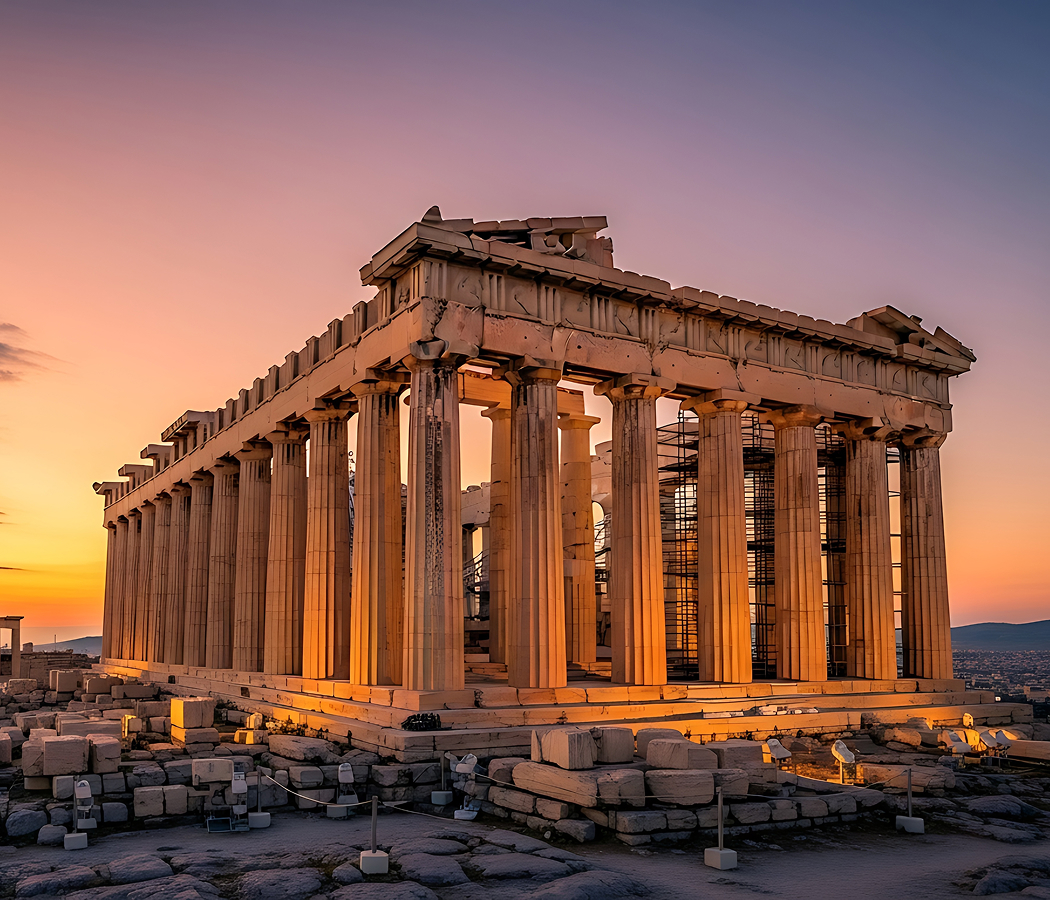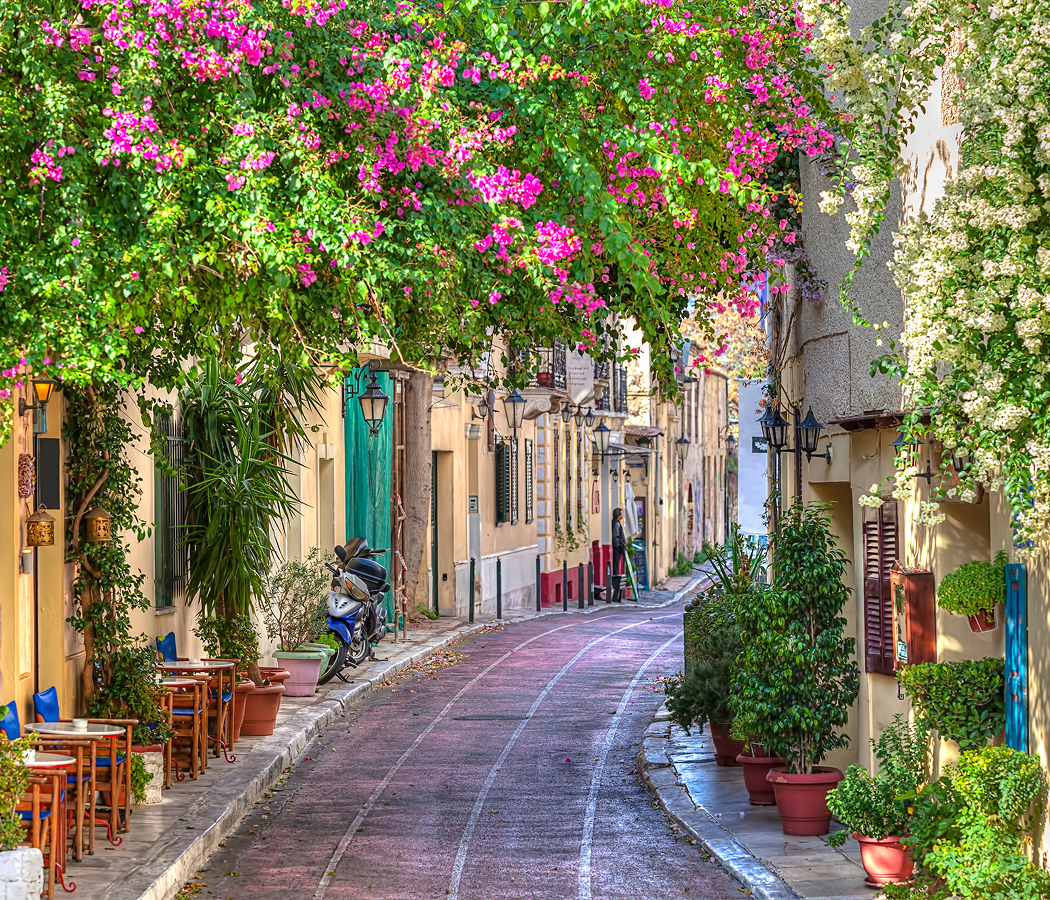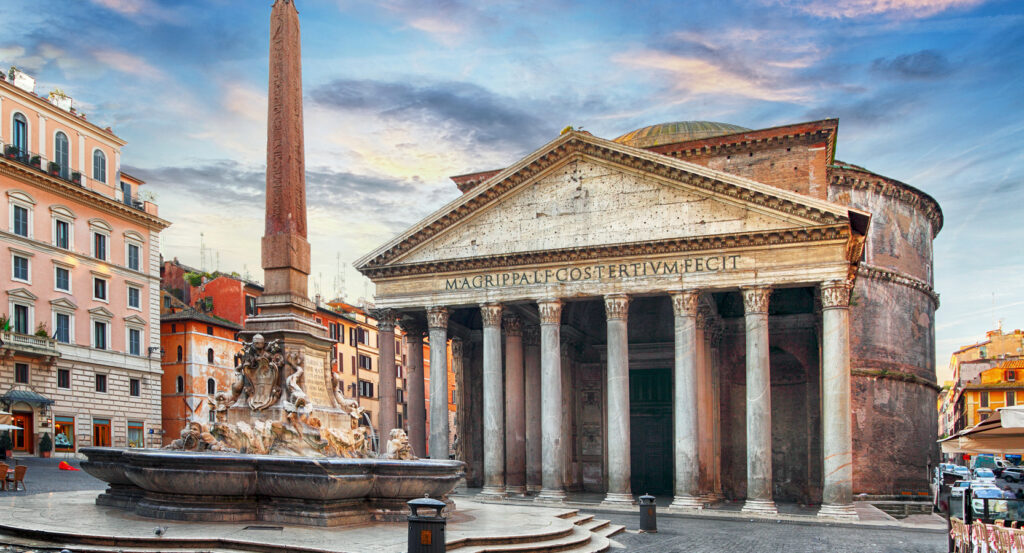
Why you should experience the Pantheon in Rome.
No monument in Rome bridges the divine and the earthly quite like the Pantheon.
It stands in the heart of the Eternal City as a near-perfect fusion of engineering genius and sacred poetry, a structure so enduring that nearly two thousand years later, it still humbles all who walk through its massive bronze doors. From the moment you step into Piazza della Rotonda, the Pantheon’s imposing columns rise before you like sentinels of history, their weathered Corinthian capitals whispering stories of emperors, popes, and philosophers. But it’s what happens once you cross the threshold that changes everything. The interior opens into a vast rotunda, a flawless sphere of light and shadow, anchored by the world’s largest unreinforced concrete dome. At its center, the oculus, a perfect circular opening to the heavens, floods the space with shifting beams of sunlight that seem to make time itself visible. The Pantheon doesn’t just honor the gods; it captures their presence, translating cosmic perfection into architecture. It’s both temple and tomb, a place where the divine meets the mortal, where the weight of centuries feels somehow effortless. In a city of ruins, the Pantheon endures not as a relic, but as proof that some creations truly transcend time.
What you didn’t know about the Pantheon.
The Pantheon has survived empires, invasions, and revolutions, a miracle of both design and destiny.
Originally commissioned by Marcus Agrippa during the reign of Augustus in 27 BCE, it was later rebuilt by Emperor Hadrian around 118, 125 CE after a fire destroyed the original structure. The famous inscription on the façade, “M·AGRIPPA·L·F·COS·TERTIVM·FECIT” (“Marcus Agrippa, son of Lucius, built this in his third consulate”), is a deliberate homage to that earlier temple, blending humility and legacy in stone. The building’s engineering remains one of the most extraordinary feats in history: the dome’s thickness tapers from 21 feet at its base to just under 5 feet at the oculus, reducing weight while maintaining perfect balance. The Romans achieved this by mixing lighter materials, like pumice, into the upper layers of concrete, a technique still studied by modern architects. At the dome’s apex, the oculus not only provides light but also serves as a structural release, preventing pressure buildup. When it rains, the water falls directly through the opening, draining invisibly through small holes in the marble floor, a subtle reminder of the harmony between nature and design. Over time, the Pantheon’s purpose evolved. It was consecrated as a Christian church in 609 CE, renamed Santa Maria ad Martyres, which preserved it from the decay that claimed most pagan temples. Today, it remains an active church, and a royal resting place. Beneath its coffered dome lie the tombs of Renaissance master Raphael, as well as Italian kings Victor Emmanuel II and Umberto I. The dome’s proportions, its height equal to its diameter, were intended to symbolize the harmony of heaven and earth, reflecting Hadrian’s fascination with philosophy and the cosmos. Centuries later, Brunelleschi studied its form before designing Florence’s Duomo, and Michelangelo would draw inspiration from it when conceiving St. Peter’s Basilica. The Pantheon’s influence ripples across continents, echoed in everything from Paris’s Panthéon to the U.S. Capitol dome, a lineage of wonder stretching from antiquity to modernity.
How to fold the Pantheon into your trip.
Experiencing the Pantheon is about timing, perspective, and reverence.
Begin early in the morning, when the Piazza della Rotonda is just stirring to life. The first rays of sunlight illuminate the façade and the bronze doors, details often overlooked in the afternoon crowds. Step inside slowly; the shift from the bright piazza to the dim, echoing interior feels like entering another realm. Give yourself a moment to adjust, then look up, the oculus commands your gaze, framing the sky like a living fresco. If you visit at noon, you’ll witness the sunbeam at its most dramatic, casting a perfect circle of light that drifts across the marble floor. The silence here isn’t emptiness; it’s reverence. Walk the circular perimeter to study the alcoves, each containing statues and tombs steeped in history. Pause at Raphael’s tomb, where an inscription honors his divine artistic gift: “Here lies Raphael, by whom Nature feared to be outdone while he lived, and when he died, feared she would die with him.” For another perspective, return in the evening. As the square fills with musicians, diners, and laughter from nearby cafés, the Pantheon transforms from monument to backdrop, a serene witness to the city’s rhythm. Take a seat at Ristorante di Rienzo or La Casa del Caffè Tazza d’Oro nearby, sip espresso or wine, and let your eyes rest on the illuminated dome as night settles. To deepen the experience, attend Sunday mass or one of the rare choral performances held inside, hearing sacred music rise beneath the oculus is something few ever forget. Before you leave, step back into the piazza one last time and look up, the dome gleaming softly under the moonlight, a reminder that the Pantheon has watched over Rome for nearly two millennia. In a world obsessed with the new, it remains unshaken, a perfect, eternal circle uniting heaven, earth, and the human soul.
Hear it from the Foresyte community.
The dome feels unreal like you’re standing inside geometry itself. Sunbeam hits the floor and suddenly you’re just small in the best way.
Where meaningful travel begins.
Start your journey with Foresyte, where the planning is part of the magic.
Discover the experiences that matter most.















